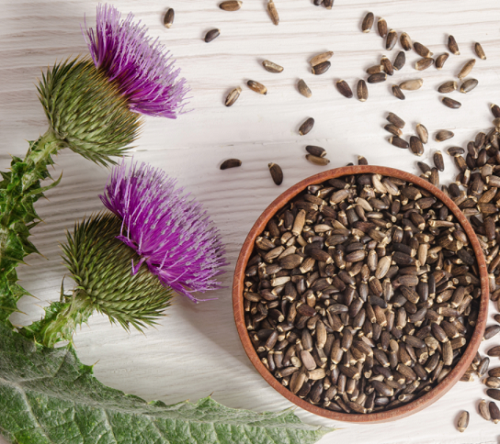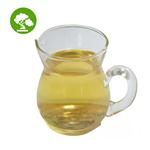The benefits of Milk Thistle Seed Oil
Apr 16,2024
Introduction
Milk thistle oil (MTO; Milk Thistle Seed Oil) is an herbal remedy derived from the milk thistle plant, which is processed using various methods, including ethanol extraction and cold pressing. Milk thistle extracted with ethanol contains high levels of silymarin. Silymarin treatment protects the liver against dietary-induced hepatic steatosis and oxidative stress, as well as chemical-induced liver injury. In contrast, milk thistle extract contains very little silymarin as a cold press oil. However, it still has beneficial effects due to its content of α-tocopherol as well as polyphenols such as vanillic acid, p-coumaric, polyphenol, silybin, and other free fatty acids, which all can react synergistically.

MTO is a mixture of flavonolignans, and the active constituents contain silibinin (50%), isosilybin (5%), silychristin (20%), and silydianin (10%).
Benefits
MTO has beneficial actions to attenuate dietary obesity-induced weight gain, hyperglycemia, hypertension, and inflammation, suggesting that MTO supplementation may benefit patients exhibiting symptoms of metabolic syndrome.
Uses
Milk thistle seed oil has a high concentration of unsaturated fatty acids, especially linoleic and oleic acid, which are beneficial to human health in preventing arteriosclerosis, diabetes, and cancer. The fatty acid composition in milk thistle seed oil is very close to that of sunflower and pumpkin oil. Some investigations suggested that milk thistle seed oil might be used as edible oil. Furthermore, milk thistle seed oil has been recommended as a potential source of natural antioxidants since it is rich in vitamin E. In China, milk thistle seed oil was authorized as a new resource of edible oil by the Chinese Ministry of Health in 2014, permitting the oil to be used in the field except for infant food[1].
Mechanism of action
Milk Thistle Seed Oil may affect mitochondrial function through several potential mechanisms. MTO induces HO-1 in adipose tissue, increasing the production of bilirubin and carbon monoxide (CO). Increased levels of HO-1 increase oxygen consumption and promote weight loss in obese melanocortin-4 receptor-deficient mice. Moreover, the heme degradation product, CO, also increases oxygen consumption through its ability to “brown” white adipose tissue. MTO also contains a mixture of polyphenols and flavonoids that also improve mitochondrial function and increase fatty acid metabolism[2].
MTO improved dietary obesity-induced insulin resistance via increased insulin signaling in adipose tissue and liver. One potential mechanism by which MTO enhanced insulin signaling is through increases in FGF21. Fibroblast growth factor 21 (FGF21) is a metabolic regulator that improves glycemic control in several models of insulin resistance FGF21 lowers the plasma triglycerides in part by increasing lipid metabolism in white adipose tissue. The high levels of polyphenols found in MTO most likely result in increased FGF21 levels, as previous studies have reported FGF21 induction in response to polyphenols. The levels of PGC-1α were also increased in adipose tissue of MTO-treated mice. FGF21 is also a strong regulator of PGC-1α, an essential mechanism in the browning of adipose tissue by FGF21. Another potential mechanism for increased insulin sensitivity and increases in FGF 21 signaling is the reduction of oxidative stress by MTO. MTO resulted in significant induction of two essential antioxidant genes, HO-1 and SOD1, in adipose tissue and liver, contributing to the enhanced insulin signaling in each tissue.
References
[1] Zhen-Shan Zhang . “Constituents and thermal properties of milk thistle seed oils extracted with three methods.” LWT - Food Science and Technology 126 (2020): Article 109282.
[2] Hsin-Hsueh Shen. “Milk thistle seed cold press oil attenuates markers of the metabolic syndrome in a mouse model of dietary-induced obesity.” Journal of Food Biochemistry 44 12 (2020).
- Related articles
- Related Qustion
Supplementation with pyridoxal 5'-phosphate monohydrate can synthesize neurotransmitters such as dopamine and serotonin, maintaining a healthy nervous system.....
Nov 4,2025Biochemical EngineeringIndium arsenide can be used in optical spectroscopy and opto-electronic devices, which is related to its structure. This article will show the crystal structure of InAs.....
Apr 16,2024Inorganic chemistryYou may like
- Abametapir:Introduction and Synthesis
Dec 25, 2023
- What is 1,8-Diazabicyclo[5.4.0]undec-7-ene?
Jul 15, 2020
- 2,2′:6′,2″-terpyridine-Application
Feb 18, 2020
Milk Thistle Seed Oil manufacturers
- Silymarin seed oil
-

- $0.00 / 1KG
- 2024-04-12
- CAS:
- Min. Order: 1KG
- Purity: 99%
- Supply Ability: 10000KG/month






